
Moped style e-bikes — those with fat seats, upright frames, swept-back handlebars, and a motorcycle-like silhouette — have become one of the fastest-growing segments in the electric bicycle market. They offer a near-motorbike presence without the noise, high emissions, or hefty cost of a gas-powered scooter. Riders gravitate to them because they pair approachable power with a relaxed riding position and a decidedly stylish look. If you’re hunting for the Best Moped Style e-Bike Brands, this guide will walk you through what to look for, why these machines matter, and which makes are earning the most attention right now. Recent roundups and buyer guides show strong consumer interest in moped-style models across price points and use cases.
What Defines a Moped Style e-Bike?
Design Aesthetics
At first glance, moped-style e-bikes look like mini motorcycles. Key visual cues include a larger, cushioned bench seat (sometimes roomy enough for two), a thick downtube that hides a large battery, and a frame geometry that emphasizes comfort and stability. Designers often borrow retro elements — round headlamps, chrome accents, and two-tone paint — to produce that nostalgic motorcycle vibe without adding engine noise.
Performance & Power
Technically these are still e-bikes (often class 2 or 3 in many markets), meaning they commonly offer throttle control and pedal-assist modes. Motor power ranges from mid—levels (250–500 W nominal) to high-power hub or mid-drive units in the 750 W+ range for higher-speed models. Battery capacities frequently sit between 500 Wh and 1,500 Wh in two-battery configurations for extended range. Manufacturer specs and independent reviews help you understand real-world range under load and speed.
Comfort & Everyday Utility
Part of the appeal is practical: luggage options, robust frames good for city potholes, comfortable seats for longer rides, and accessible step-through options for easy mounting/dismounting. Many moped-style e-bikes also include integrated lighting, racks, and accessory ecosystems that make them daily-drivable machines rather than pure toys.
Benefits of Choosing a Moped Style EBike
Eco-Friendly Commuting
Riding a moped-style e-bike replaces short car trips, which are disproportionately carbon-intensive. With zero tailpipe emissions and low electricity use per mile, these e-bikes make urban commutes cleaner and quieter.
Cost Savings Compared to Cars
Beyond environmental perks, operating costs drop dramatically. Charging an e-bike for a week of commutes costs pennies compared to fuel. Insurance and maintenance are usually cheaper than for scooters or cars, and parking is frequently free or simpler in urban areas.
Style Meets Substance
There’s a cultural element too: moped style off road e-bikes often signal a lifestyle choice — vintage aesthetics, city-savvy practicality, and a bit of fun. That’s why many brands focus on appearance and customization options as much as raw specs.
Key Features to Look for in the Best Moped Style e-Bike Brands
Motor Power and Battery Range
Pick a motor and battery that match your intended use. City commuters may be fine with 500–750 W motors and 40–60+ mile real-world range, while riders who want freeway-capable speeds or long weekend rides should look at higher-capacity batteries and dual-battery options. Independent reviews are particularly helpful for gauging real-life range.
Read More: Hub Drive vs Mid Drive: Which eBike Motor Is Better?
Build Quality and Frame Design
Look for welded aluminum or chromoly frames rated for the weight and stress of higher-torque motors. Quality suspension, strong hubs, and reliable brakes (hydraulic discs preferred) will make a big difference in ride confidence and longevity.
Safety Features and Lighting Systems
Because these bikes look—and sometimes ride—fast, lighting and reflectors matter. Integrated LED headlights, daytime running lights, and strong taillights with brake indication are common on top models. Braking systems should match the bike’s speed capabilities.
Connectivity & Smart Integration
Many modern e-bikes include app-enabled diagnostics, lock features, GPS, and over-the-air updates. If convenience and theft-deterrence matter to you, check what the brand offers in software and ecosystem features.
Best Moped Style e-Bike Brands You Should Know
Below are brands that consistently appear in best-of lists, have dedicated moped-style models, or specialize in the retro/moped aesthetic.
Super73
Super73 popularized the “electric motorbike” look for urban riders and hobbyists. Their S-, R-, and Z-series models span from approachable commuter rigs to full-on performance variants with features like larger batteries, suspension, and premium brakes. Super73’s lineup is often highlighted for design and community culture as much as for specs.

VICTRIP R6 Pro - 1500W Full Suspension Moped Style Electric Bike
For riders seeking maximum performance, the VICTRIP R6 Pro raises the bar with a 1500W high-output motor and upgraded full-suspension design. This model is built for thrill-seekers who want both city cruising capability and off-road toughness. Its extended range battery, reinforced frame, and premium braking system make it an elite choice among moped-style e-bikes. Whether it’s steep hills, rugged trails, or long-distance rides, the R6 Pro is engineered to handle it all with confidence.

Vintage Electric
Vintage Electric sits at the boutique end of the market, leaning into motorcycle-inspired aesthetics with premium builds and retro finishes. These bikes are positioned as lifestyle pieces — meticulously designed and built with top-quality materials. While they come with higher price tags, Vintage Electric emphasizes timeless design and craftsmanship.
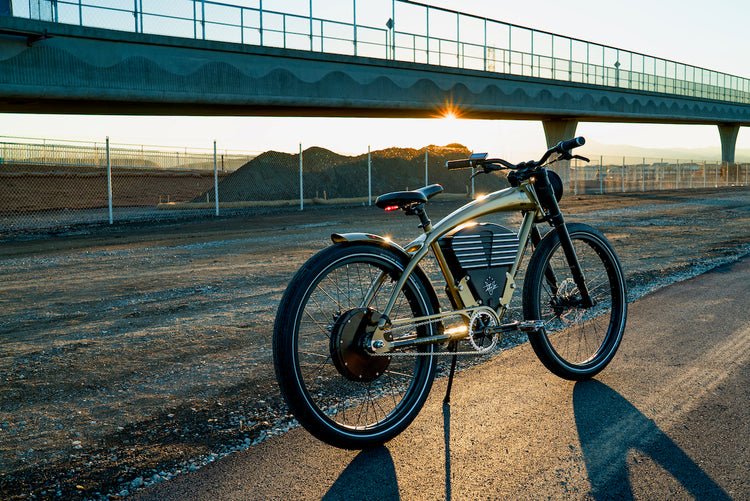
TST R002 Electric Bike
Another standout in the high-performance category is the TST R002 1500W eBike. Equipped with a powerful 1500W motor and dual suspension, the R002 is engineered for both speed and stability. Its fat tires, long padded seat, and integrated lighting system make it a versatile option for riders who split their time between city streets and off-road paths. With rugged build quality and aggressive styling, it’s a top choice for adrenaline-driven riders.
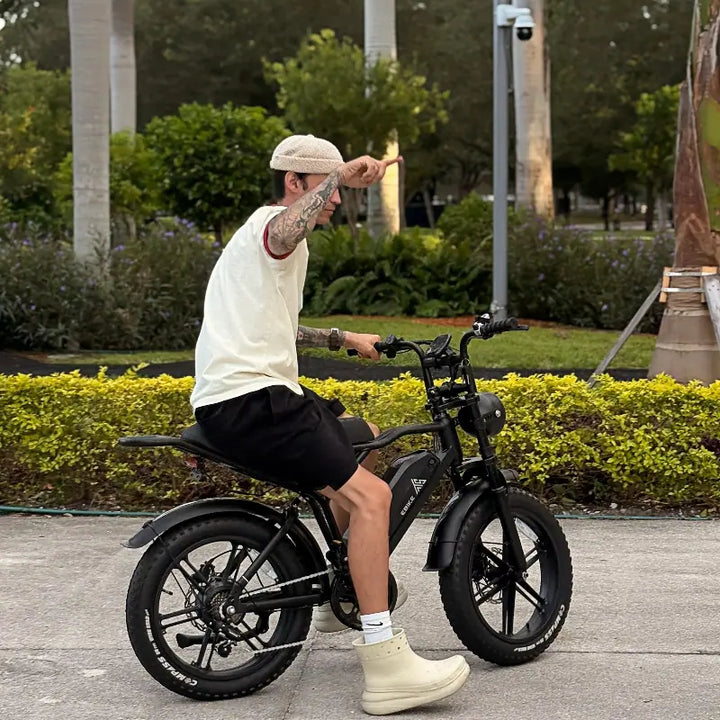
How to Choose the Right Moped Style e-Bike for Your Needs
For City Commuters
Prioritize maneuverability, integrated lights, and a battery that comfortably covers your daily roundtrip plus a margin (20–40% recommended). A 500–750 W motor is usually ample for city hills; choose hydraulic disc brakes if you expect wet conditions.
For Long-Distance Travelers
Look for dual-battery options, larger watt-hour packs (1,000 Wh+ combined), and comfortable ergonomics. Suspension and a supportive seat will reduce fatigue on longer rides. Brands like VICTRIP and some Ride1Up models emphasize these longer-range builds.
For Casual Weekend Riders
Style and comfort may trump outright range. VICTRIP, Vintage Electric, and Meelod-type models are great when aesthetics and a relaxed ride are primary concerns.
Maintenance Tips for Moped Style e-Bikes
Battery Care
Charge regularly but avoid extreme states of depletion for long-term health. Store batteries at moderate temperatures (not in freezing garages) and follow the manufacturer’s recommended charge cycles.
Tire and Brake Maintenance
Moped-style e-bikes often use fat tires; keep them at the correct pressure to balance comfort and rolling efficiency. Check hydraulic brake pads and rotor condition regularly — the more powerful the bike, the more heat and wear brakes may see.
Software & Connectivity Updates
If the bike includes an app or firmware updates, install them promptly. These updates often bring bug fixes, battery-management improvements, and sometimes new ride modes.
Conclusion: The Future of Urban Mobility
Moped-style e-bikes occupy a sweet spot between practical commuting and expressive personal transportation. They deliver an approachable motorbike feel while preserving the efficiency and simplicity of a bicycle — which is why so many riders and brands are investing in the category. Whether you prioritize range, classic looks, cargo utility, or that retro-chic vibe, there’s likely a moped-style model that fits your needs. When shopping, prioritize quality components, realistic real-world range figures, and local legal compliance — and don’t forget to test-ride if you can. The brands listed above are a solid starting place for exploring the segment; from community-driven names like Super73 to pragmatic players like VICTRIP and performance-focused Rad Power, options abound.
FAQs
Are moped style e-bikes street legal?
Legality depends on your jurisdiction. In many places they are legal as Class 2 or 3 e-bikes (throttle and pedal assist), but some high-power models (or ones with 30+ mph top speeds) may be classified as mopeds or light motorcycles — requiring registration, licensing, or a helmet. Always check local vehicle codes.
How fast can they go?
Typical e-bike classes cap assistance at 20–28 mph (32–45 km/h). However, high-powered moped-style bikes often top out higher if the manufacturer markets them for that speed; in many regions, if an e-bike surpasses the legal e-bike speed limit it may be reclassified. Check a model’s claimed top speed and local law.
Do I need a license to ride one?
Not usually for class 1–3 e-bikes under local e-bike rules, but if the unit’s specs push it into moped/light motorcycle territory then a license/registration could be required. When in doubt, consult your country/state vehicle authority.
How long do the batteries last?
Battery longevity depends on chemistry, care, and charge cycles. Most lithium packs retain good capacity for 500–1,000 full charge cycles; real-world range per charge typically varies 30–80+ miles depending on pack size, terrain, rider weight, and assist level. Check real-world tests for the model you’re considering.
Are they safe for beginners?
Yes — provided you choose an appropriately powered model, learn throttle control, and use safety gear. Because they’re heavier and can accelerate briskly, beginners should practice in low-traffic areas and consider models with lower top speeds or limited throttle.

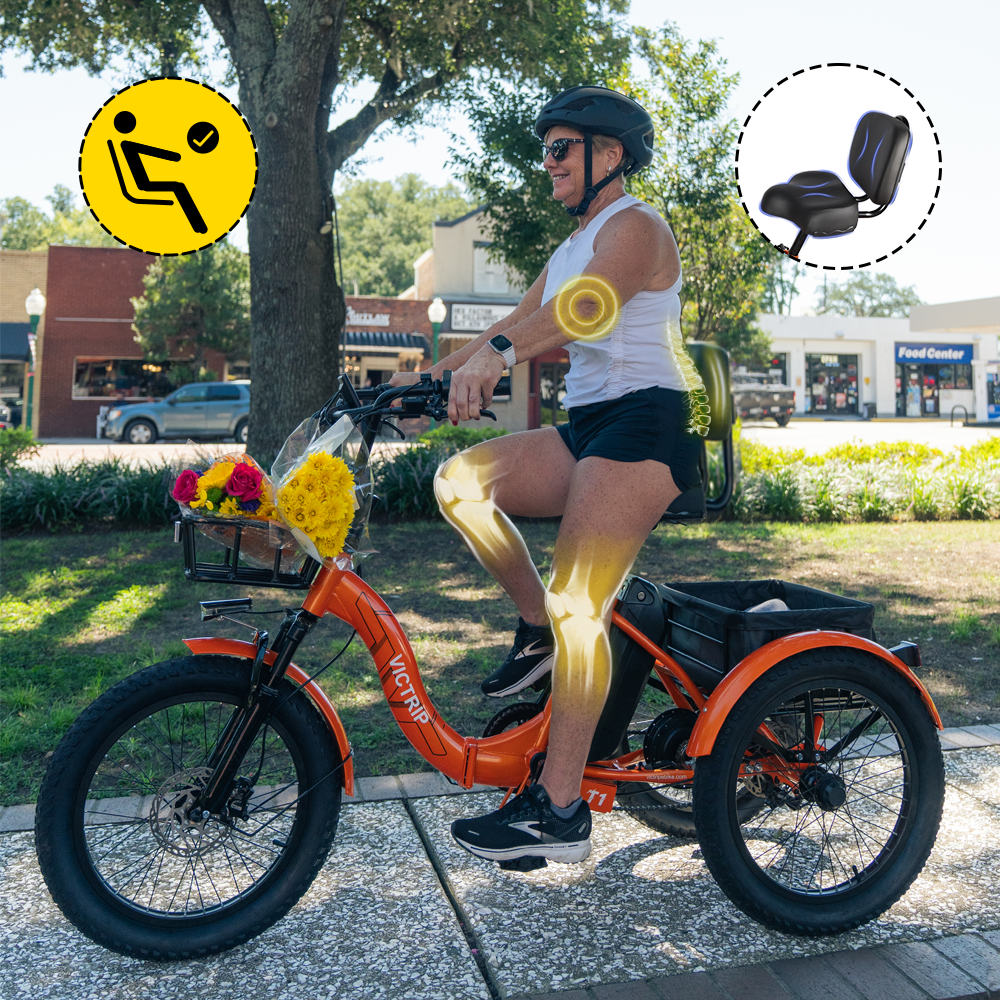
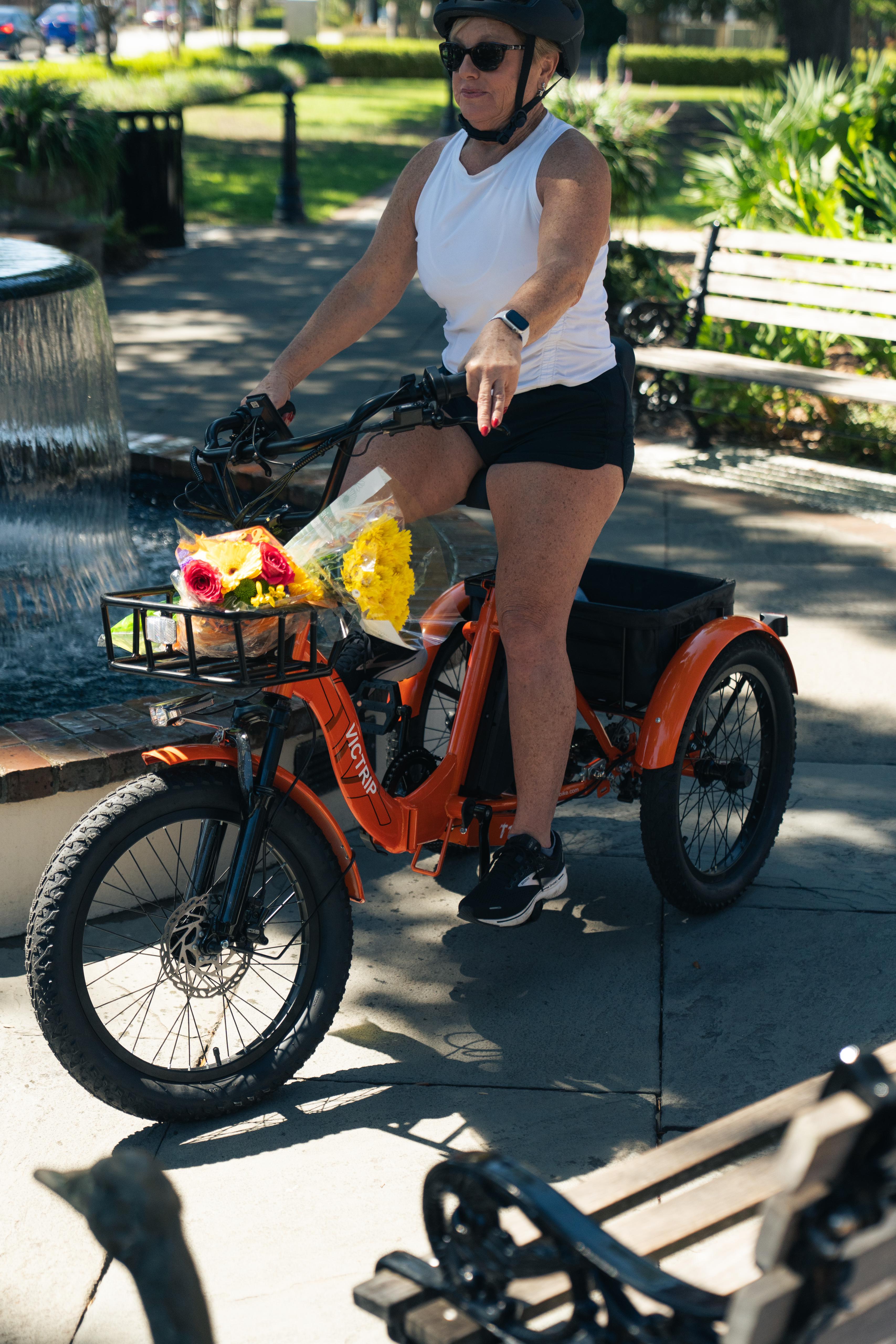
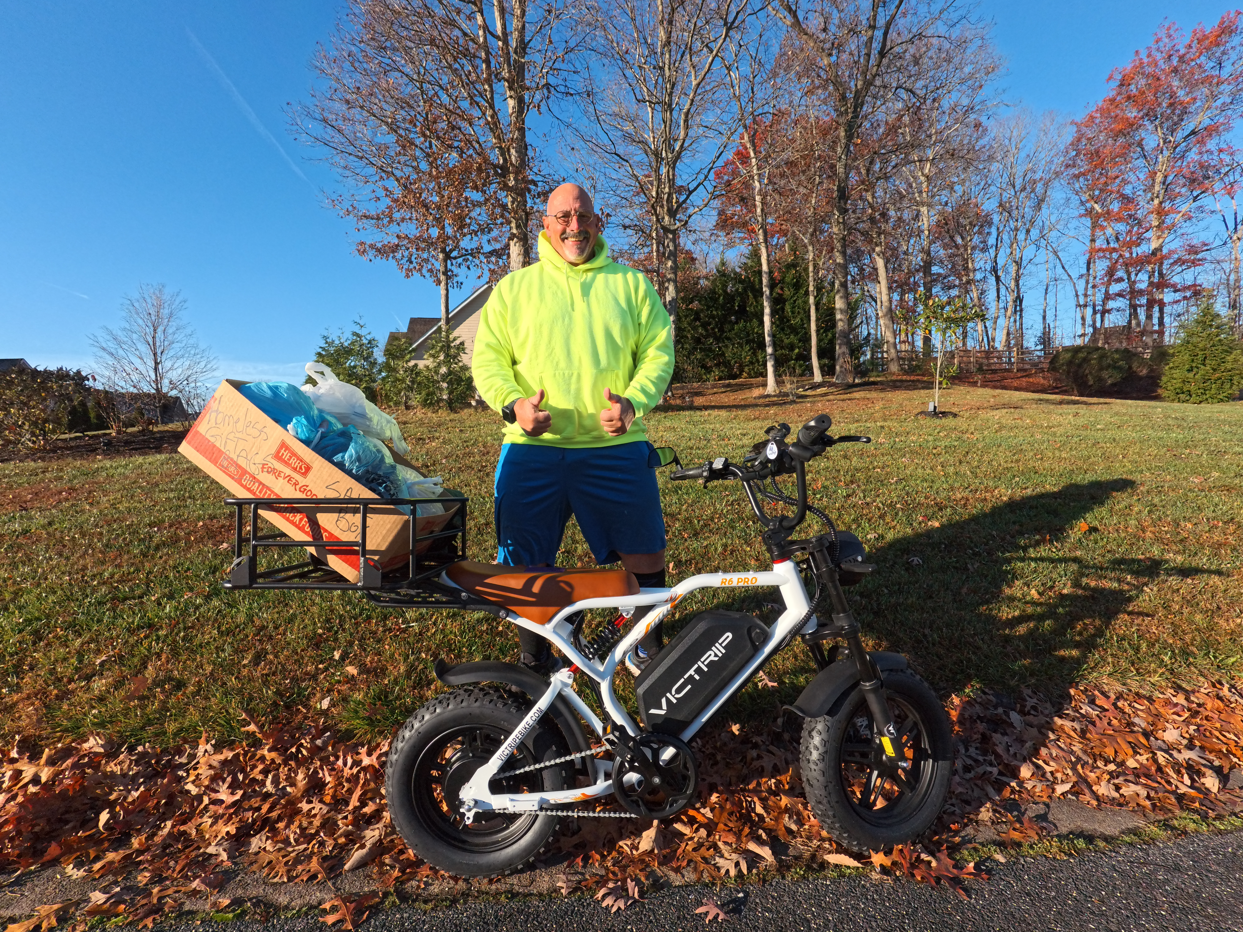
Share:
Electric Bike Care and Charging Tips
Cool Electric Bikes for Teens Who Love Style